
|   |

|   |
Lava-Kusa at Narada Gana Sabha - Balayogi Venkataraman e-mail: balayogiv@gmail.com Photos: R Prasana Photography February 13, 2016 Lava Kusa, a natya roopakam, a Tapas production, was staged at Narada Gana Sabha, Chennai, on the 5th of February. A soirée of more aesthetics over theatrics is the hallmark of any classical art, more so Indian classical dance forms where emphasis is more on expressing devotion and where entertainment is the outcome of portrayal of such expressions. So in keeping with this healthy tradition, of emphasizing aesthetics over theatrics and devotion over entertainment, Lava-Kusa had more pristine musical and dance oriented presentations than excessive props to convey the character and contextual depictions. The thread of excellent lyrics, music combined with appropriate and powerful abhinaya and hastamudras ensured to enchain the scenes one after another while simultaneously and effectively embellishing the characters manifesting various moods and emotions. 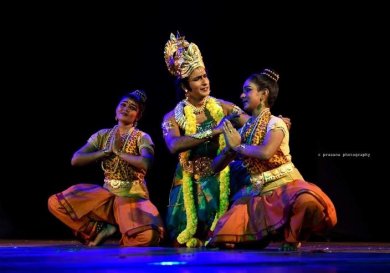
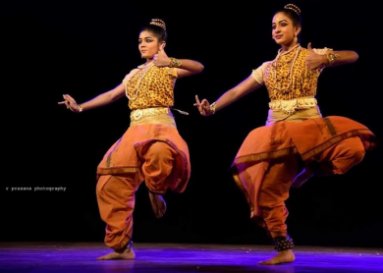
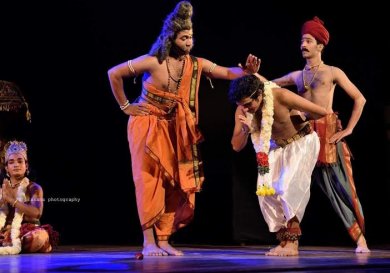
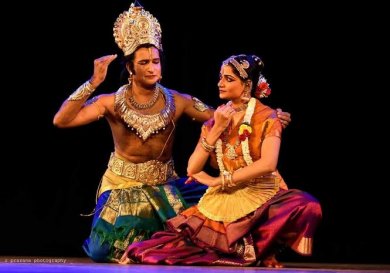
A dance drama has to pay attention to another important dimension i.e. space. This was also deftly handled as lighting was used very carefully (without being jarring or too bright- compromises necessitated by poor quality telecasting requirements) only to recreate the effects of distance, space, portray personalities from different milieus namely, those from the royal abode (Rama and his brothers) and those living in an ashram (Lava, Kusa and Valmiki). Battle scenes were set in suitable nadais (rhythmic patterns) in chatusram, mishram and kantam with appropriate raga patterns. Bharatanatyam’s key feature is nritta with its complex rhythmic footwork of strikes, extensions, jumps, leaps, intricate patterns made by movement of hands and legs appropriately and not exaggeratedly (then it becomes too theatrical) all stemming from an extended and dynamic torso with controlled movements creating perfect geometry in motion was well portrayed through generating and releasing the emotion of the character of Anjaneya played by a senior male Bharatanatyam artiste and the guard of the hermitage of Lava Kusa. Both characters exhibited special effort or stylization, such as high kicks, leaps, or measured walks. They also manifested how Bharatanatyam requires unaccustomed patterns of muscular exertion and relaxation as well as an unusually intense or sustained expenditure of energy and showed how a dancer may become intensely aware of the force of gravity and of a state of equilibrium or disequilibrium that no one can experience in any other normal or acrobatic activity. 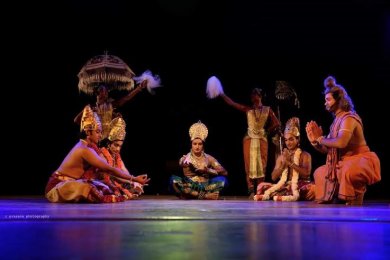
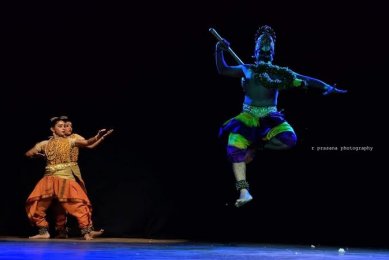
The role played by Anjaneya was so vibrant that many could experience kinaesthetically something similar to the physical sensations of the artiste. Though one felt excess of yellow on cheeks, to enhance the protrusion of reddish jaws, could have been avoided. There was maturity and poise in the character of Valmiki and Vashista. The beauty was this hour long briskly paced dance drama was also spiced with sublime incorporation of sculpturesque poses of some characters with appropriate ragas like Sahana accompanying such a scene. |